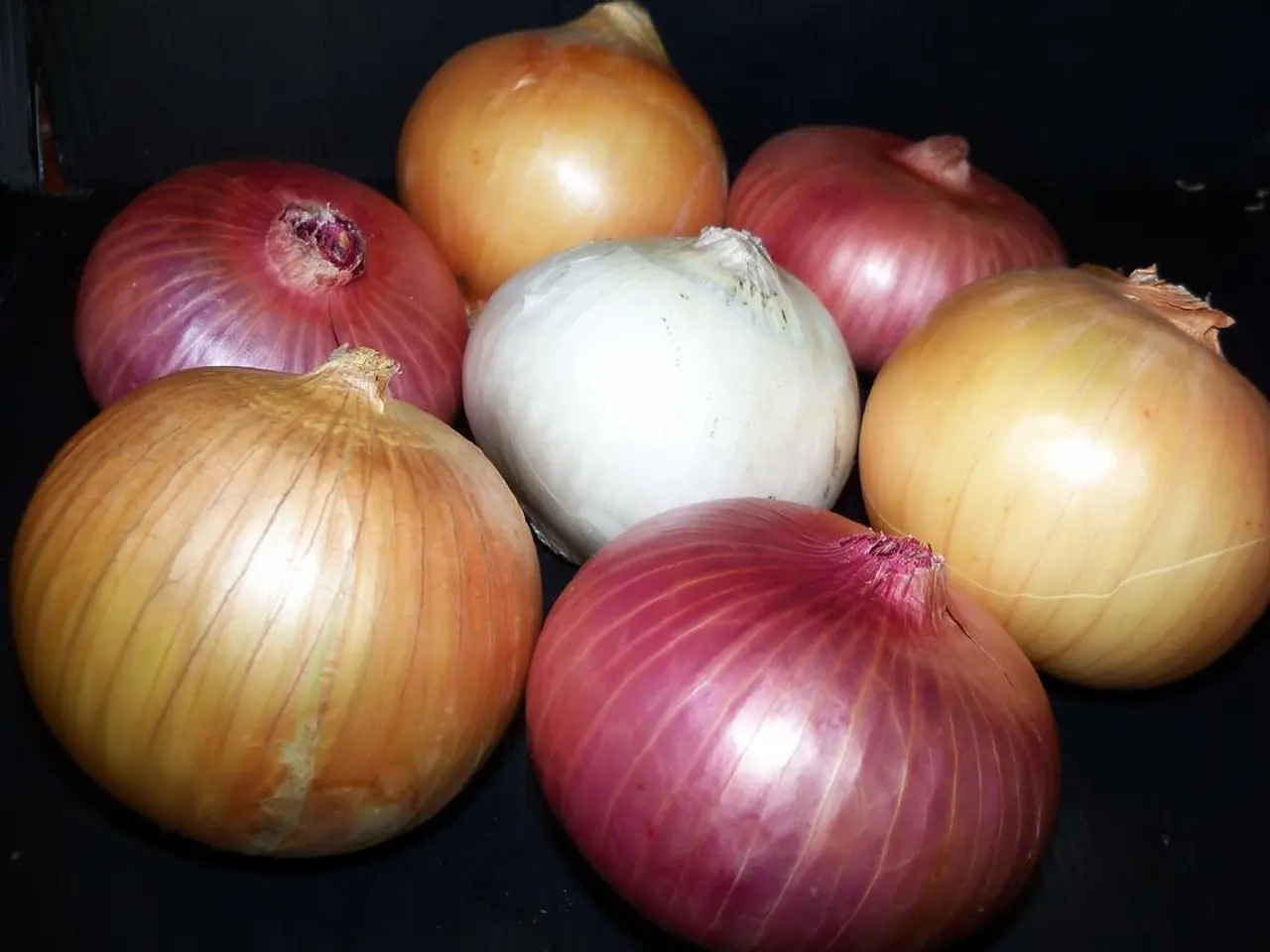Start git-go on garlic cultivation! Despite the chill, it's currently the optimal time for planting garlic. Discover easy steps to seed and grow it.
Growing and Choosing the Best Garlic Varieties for Home Gardening
Growing garlic at home is a rewarding and straightforward process that yields flavorful bulbs for fresh use and long-term storage. With a variety of individual cultivars available, home gardeners can select the best options for their climate and needs.
Choosing Garlic Varieties:
When it comes to choosing garlic varieties, consider the climate and storage needs.
- Hardneck garlic is best for colder climates (USDA zones 3-6). These varieties have fewer but larger cloves, produce flowering scapes, and offer complex, bold flavors. Suitable options for cold regions include German White Stiffneck, Montana Zemo, and Shandong. Hardneck garlic scapes can be harvested as a culinary bonus.
- Softneck garlic thrives in milder climates and has more cloves per bulb, making it ideal if you want garlic that lasts through the year. Softneck varieties are also preferred for braiding.
- Elephant garlic is milder and larger but is technically a leek. It’s beginner-friendly with impressive flower stalks.
Growing Garlic:
- Planting time: Typically in the fall, 4 to 6 weeks before the ground freezes, allowing root development before winter dormancy. In mild climates, planting can happen in early winter.
- Soil: Use loose, well-drained soil rich in organic matter. Loosen soil 6–8 inches deep and mix in compost before planting.
- Planting method: Break bulbs into cloves keeping skins intact. Plant cloves pointy-end up, about 2 inches deep, spaced 4–6 inches apart, with rows 8–12 inches apart.
- Mulching: Cover heavily (3–6 inches) with straw or leaves to protect over winter and conserve moisture.
- Care: In fall, focus on phosphorus and potassium to encourage root development. In spring, boost nitrogen for leafy growth and bulb formation using organic fertilizers such as fish emulsion or fish meal.
- Watering: Provide regular water, especially in early summer during bulb development. Harvest garlic scapes 2–3 weeks before harvesting bulbs to improve bulb size and use scapes in cooking.
- Harvest: Typically the next summer when leaves turn yellow but before they die back completely.
Summary of Variety Choices Based on Climate and Use:
|Garlic Type|Climate|Flavor|Cloves per Bulb|Storage|Additional Features| |-|-|-|-|-|-| |Hardneck (e.g., German White Stiffneck, Montana Zemo)|Cold|Bold, complex|Fewer, larger|Shorter (up to 6 months)|Produces edible scapes| |Softneck|Mild|Mild to medium|More cloves|Long storage|Good for braiding| |Elephant Garlic|Mild|Mildest|Very large cloves|Moderate|Tall flower stalks|
To ensure the best results, apply rock potash and bone meal to the soil at around 50g per square metre before planting garlic. For cooler climates, planting cloves from shop-bought garlic may not be suitable, and The Garlic Farm on the Isle of Wight offers a variety of cultivars. The sweet, subtle flavors of a home-grown garlic bulb can put you off store-bought garlic.
Garlic can be eaten at every stage, including the spring onion-like greens, 'scapes', and curly green stalk-like flower buds. At harvest time, the baked heads of the 'wet' new garlic can be roasted whole, and the dried crop can be eaten until Christmas and beyond.
By selecting varieties suited to your climate and following seasonal planting and care guidelines, you can successfully grow garlic for fresh use and long-term storage in your home garden.
- To grow your own garlic, consider the climate and storage needs, selecting hardneck garlic for colder zones (3-6) or softneck for milder climates.
- Hardneck garlic offers bold, complex flavors, has fewer but larger cloves, and produces edible scapes, while softneck garlic has more cloves and is ideal for braiding.
- Plant garlic cloves in the fall, in loose, well-drained soil rich in organic matter, for optimal root development and bulb formation.
- Mulch heavily with straw or leaves during winter to protect the garlic and conserve moisture.
- At each growth stage, from spring onions-like greens to 'scapes' and flower buds, garlic can be enjoyed as part of a wholesome home-and-garden lifestyle, enriching not just your meals but also the landscape of your garden.




